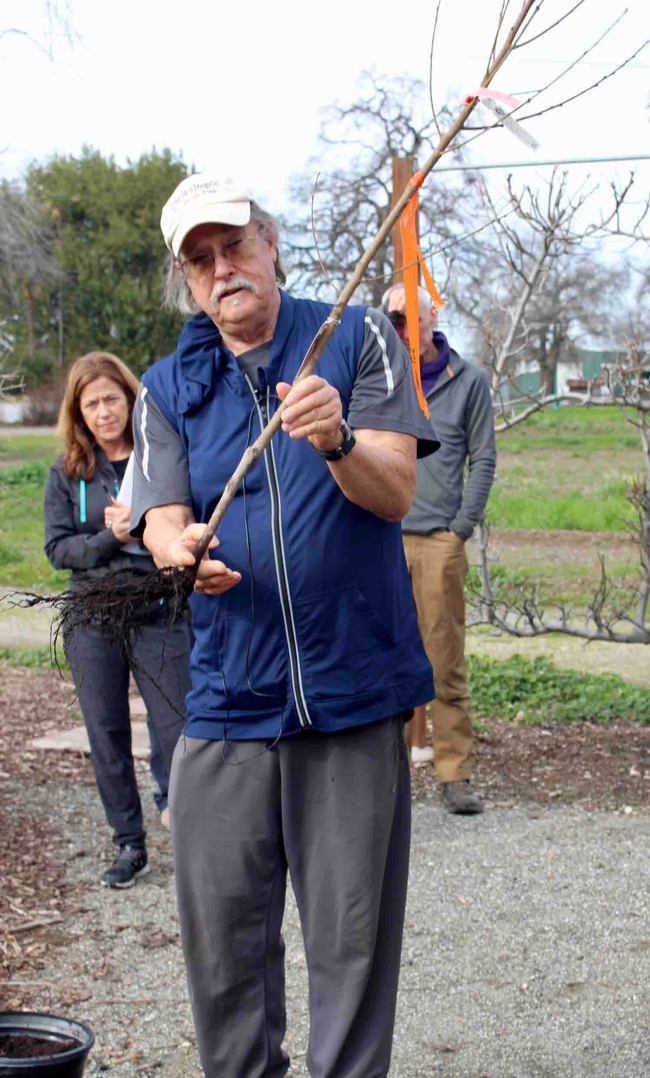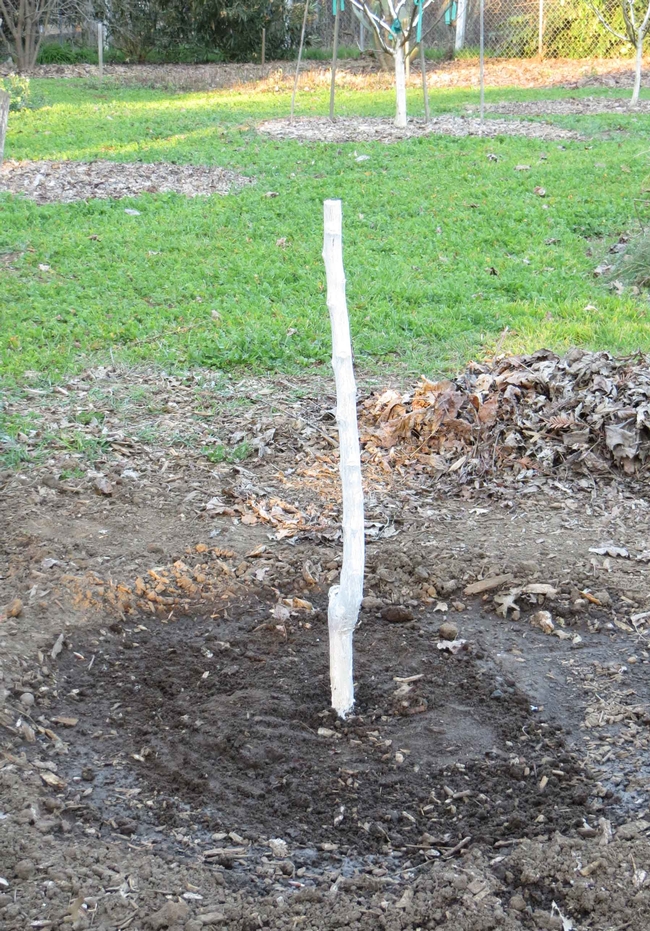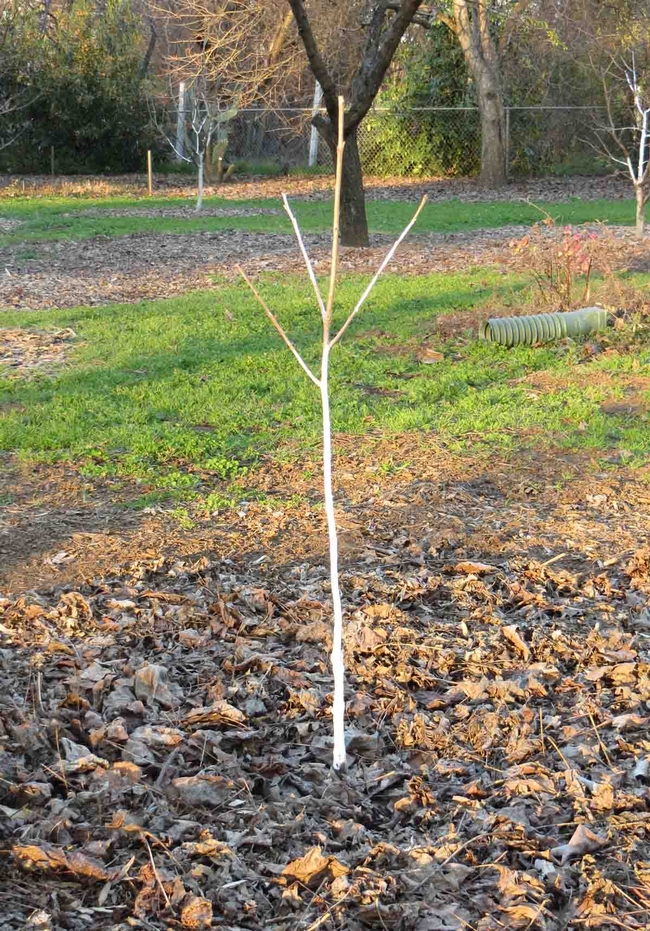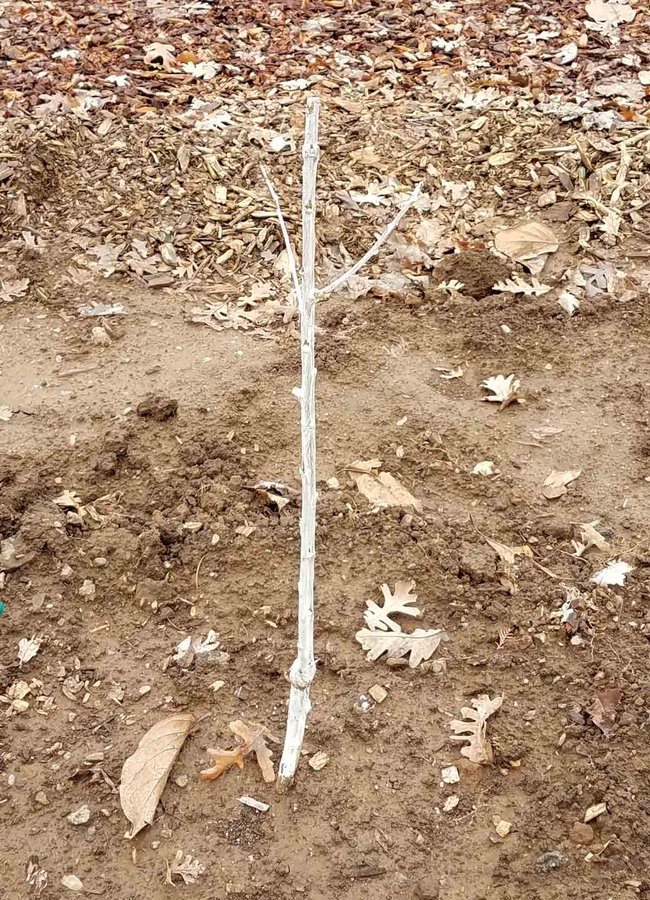There are several advantages to planting bare-root trees: they are usually less expensive, easier for gardeners to transport, and they will grow their roots entirely into native soil (rather than having to transition from potting mix into dissimilar native soil). Also, the ideal time to plant bare-root trees is in the winter, when you have a break from the demands of other garden chores.
Tom Hansen demonstrates the root system on a bare root fruit tree at Master Gardener workshop. Michelle Graydon
Once the planting site has been prepared, it's time to select the tree. Trees with a trunk diameter between one-half and five-eighths of an inch usually become established faster than larger or smaller stock. If the root mass is visible, be sure it is well balanced, not “one-sided.” Remove any dead or damaged roots before planting. It is best to plant bare-root trees immediately after bringing them home, but if this is not possible, the roots should be covered with sawdust or compost and kept moist until planting.
Thriving pear tree after a few years, with trunk whitewashed to prevent sun damage. Jeanette Alosi
Newly-planted Blenheim apricot. Jeanette Alosi
Clear an area about 3 feet wide around the tree, eliminating weeds and grasses to keep them from competing with the tree for water and nutrients. To prevent future weed growth and conserve moisture, a layer of mulch 3 to 6 inches thick can be placed around the tree. However, to avoid crown rot, keep the mulch several inches away from the tree trunk. As a final step, remove the top of the tree by pruning back to a single trunk approximately 24 inches tall and paint the bark of the entire tree trunk with white interior latex paint diluted with water (two parts water to one part paint) as a whitewash to reflect excess heat. This prevents sunburn and the resulting invasion of wood-boring insects that can stunt or kill the new tree.
Fuyu persimmon purchased bare-root and planted. Jeanette Alosi







